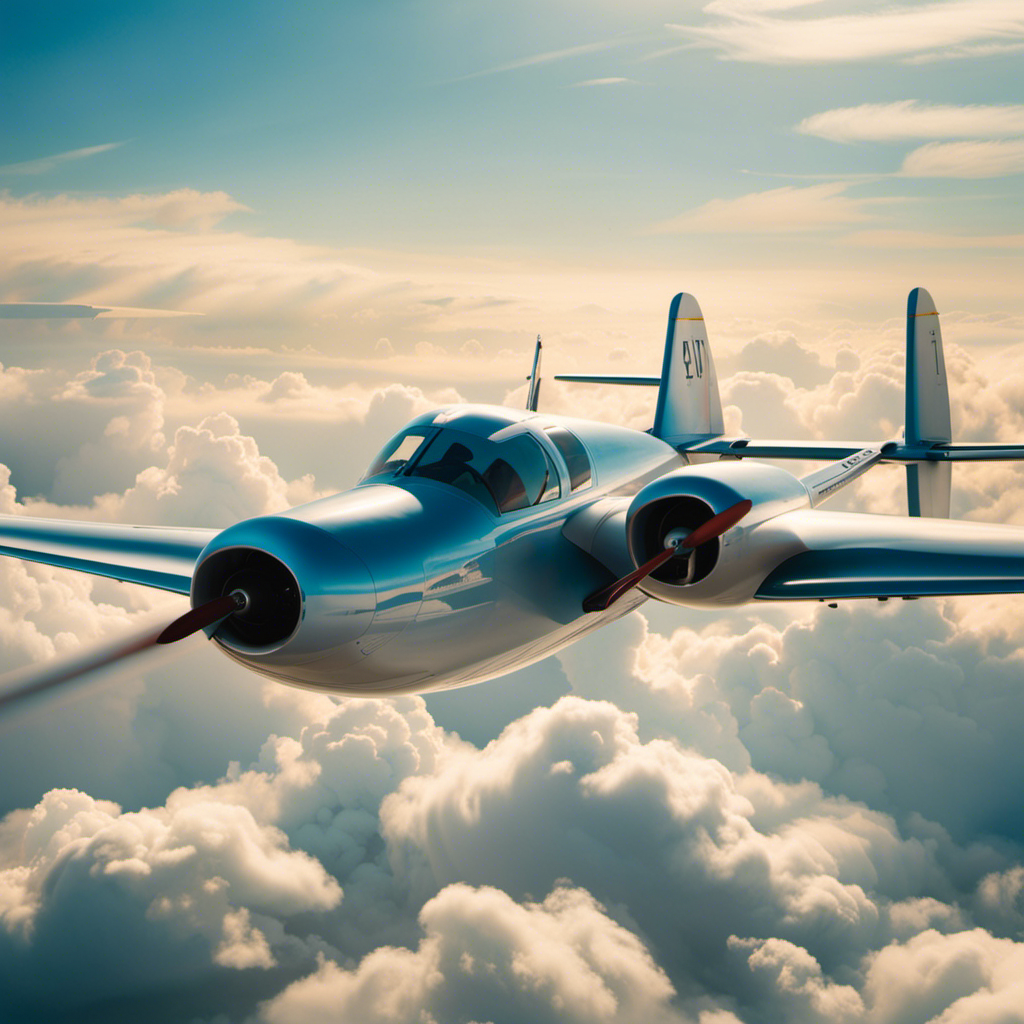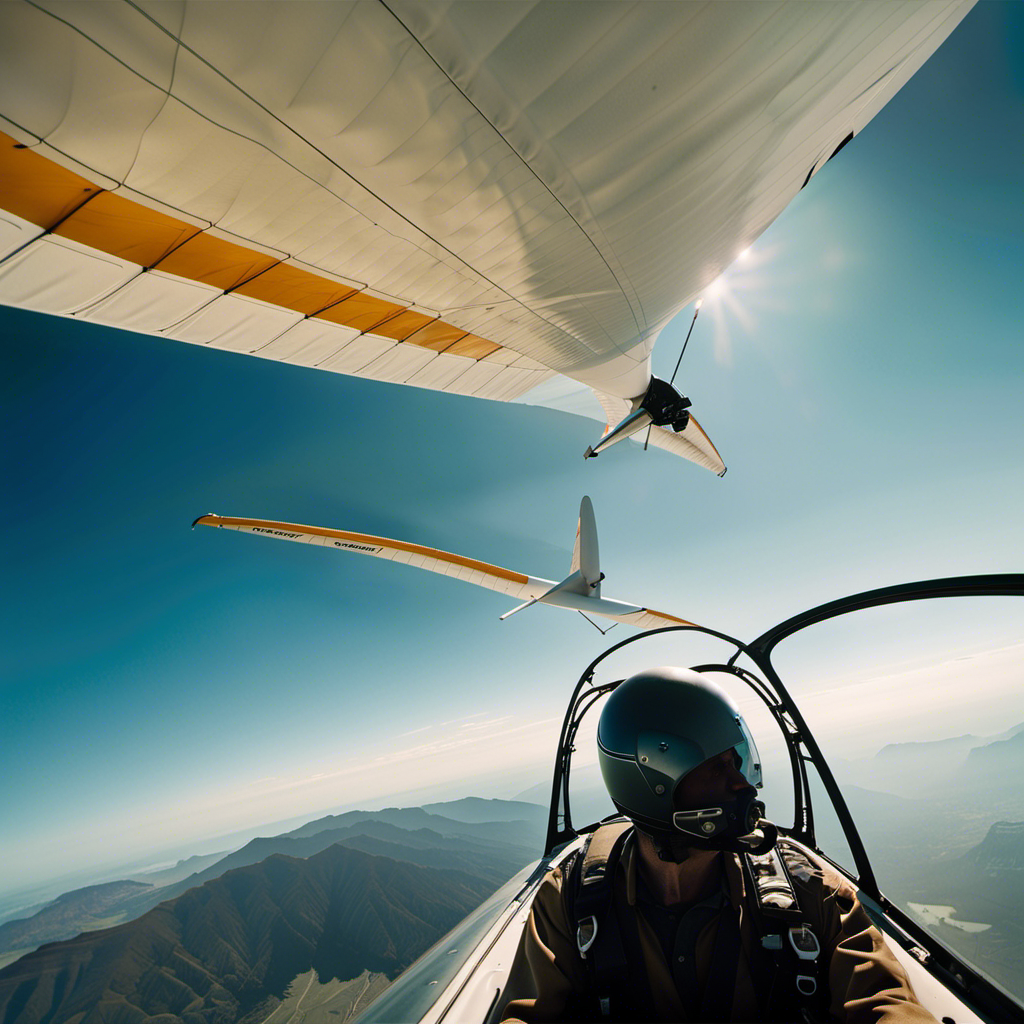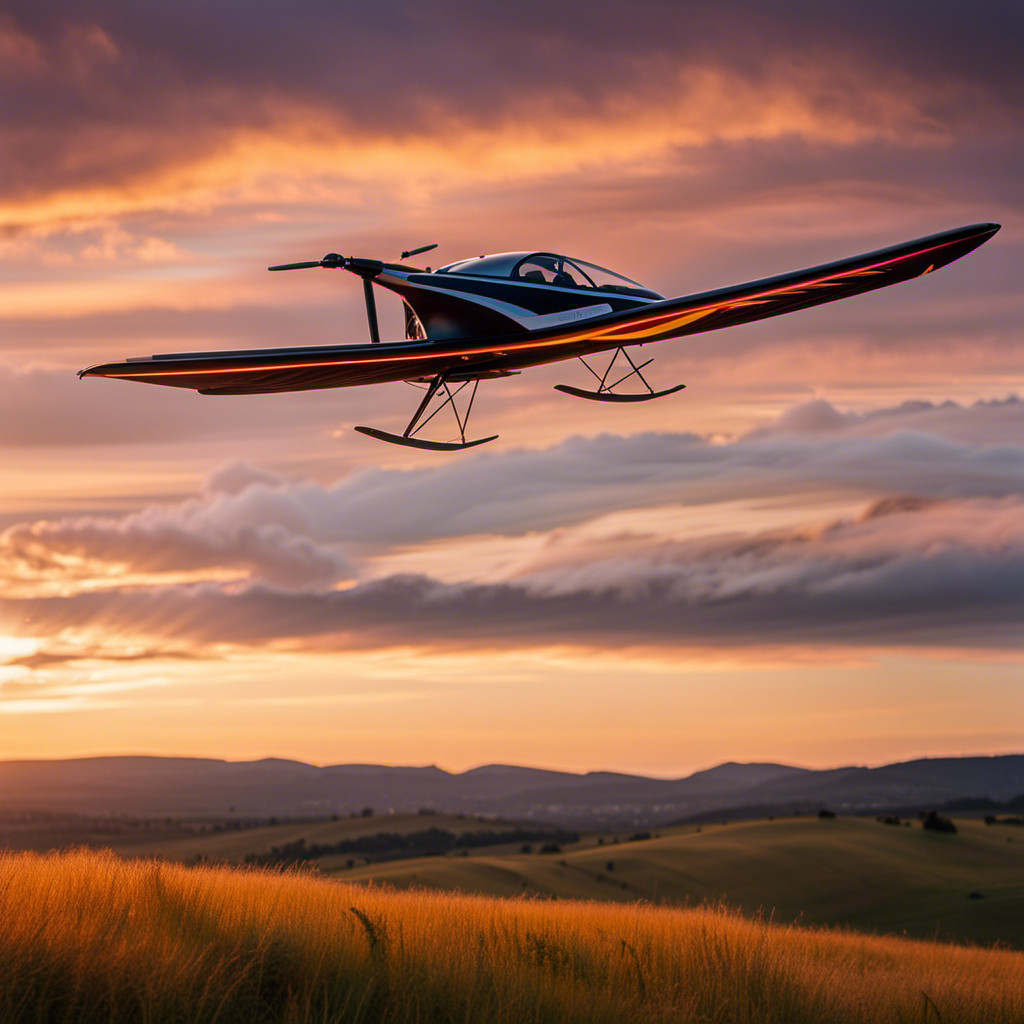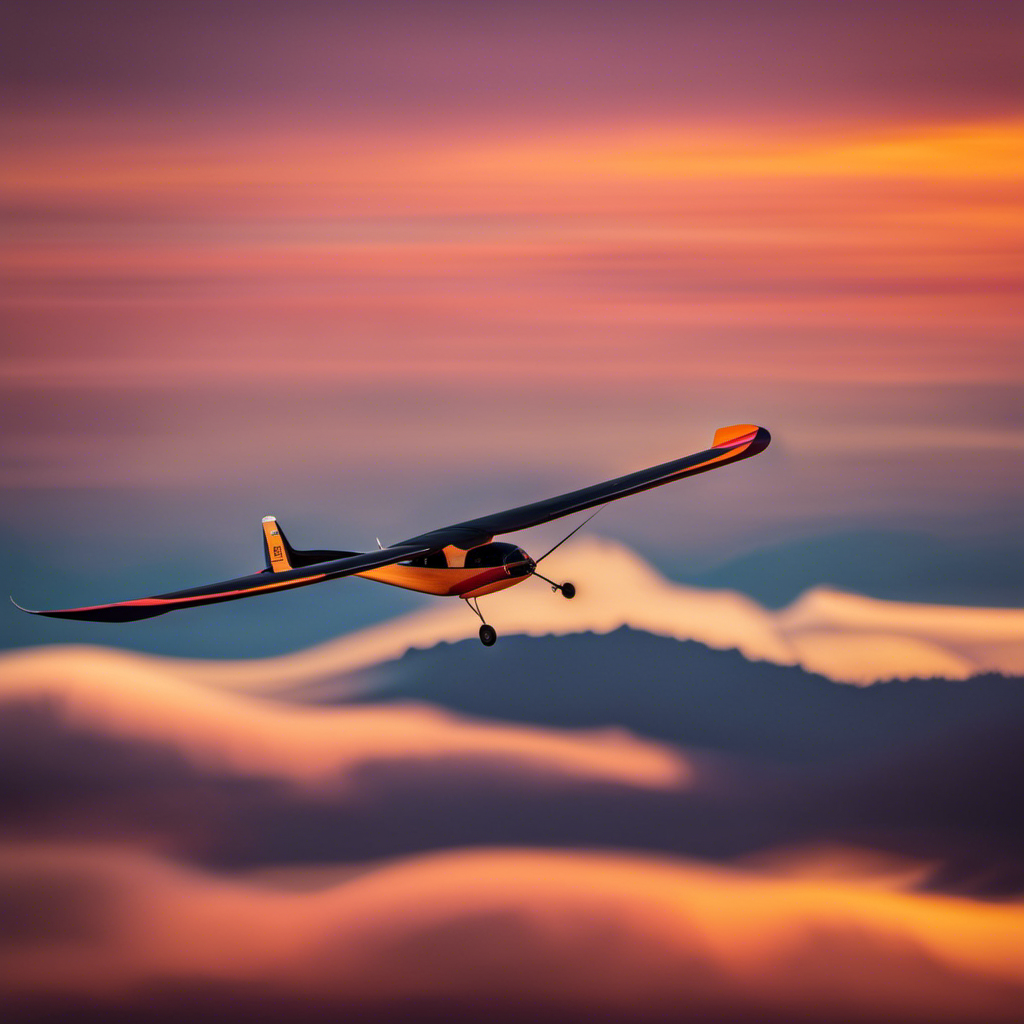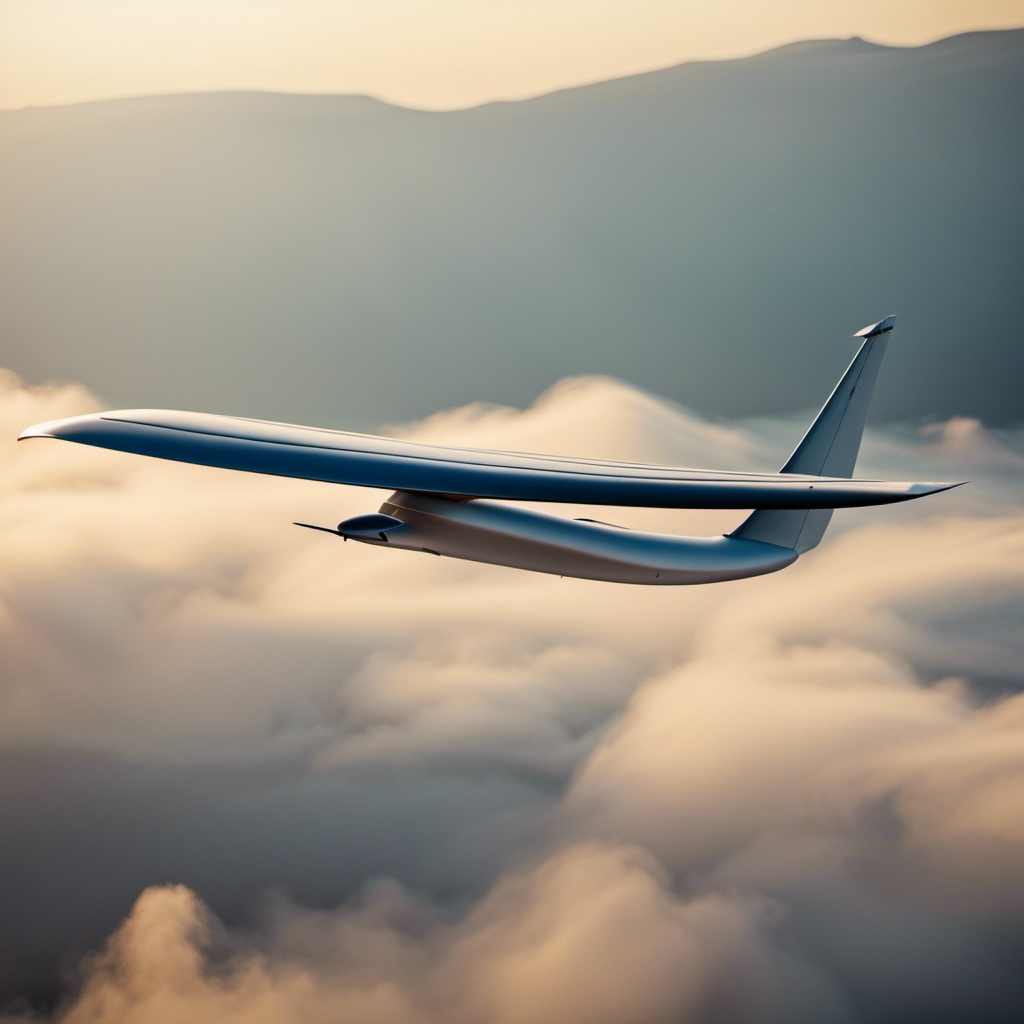Picture soaring through the sky, feeling free and weightless, with only the wind carrying you. This is the magic of experiencing a glider plane ride.
As a pilot, I’ve experienced the thrill of takeoff and the joy of gliding through the clouds. The beauty of aerial perspectives and the breathtaking views are unmatched.
In this article, we’ll explore the history, mechanics, safety measures, and future of glider plane technology.
Get ready to be elevated to new heights with the magic of glider plane rides.
Key Takeaways
- Glider plane rides require thorough safety measures and regulations, including inspections, proper control functioning, understanding airspace regulations, and effective communication with air traffic control.
- The training and certification process for glider pilots includes ground school, flight training, solo flight, and instructor assessment to acquire necessary skills and knowledge.
- Advancements in glider plane technology have led to improved aerodynamics, use of new materials, adoption of electric propulsion, and autonomous capabilities, contributing to a more sustainable aviation industry.
- Glider planes offer increased efficiency with longer flights, reduced emissions and operating costs with electric propulsion, enhanced safety and reduced pilot workload with autonomous capabilities, making them an attractive option for recreational and commercial purposes.
The History of Glider Planes
You may not realize it, but glider planes have a rich history that dates back to the late 19th century. These remarkable aircraft, also known as sailplanes, rely solely on the forces of nature to stay aloft.
It all began with the pioneering work of Otto Lilienthal, a German aviation enthusiast who made significant advancements in glider design and flight. His experiments and research laid the foundation for modern glider planes.
Over the years, glider technology has evolved, with improvements in materials and aerodynamics. Today, glider planes offer a unique and exhilarating flying experience, allowing pilots and passengers to soar through the skies silently and gracefully.
But how exactly do these marvels of aviation work? Let’s delve into the mechanics and principles behind glider plane flight.
How Glider Planes Work
Learning how glider planes work is fascinating and can provide a deeper understanding of the mechanics behind these incredible aircraft. Here are some key points to consider:
-
Glider planes rely solely on the forces of lift and gravity to stay in the air. They have no engines and are designed to take advantage of updrafts and thermals.
-
The wings of a glider are shaped to create lift as air flows over them. Pilots control the glider’s pitch, roll, and yaw using control surfaces such as ailerons and rudders.
-
Energy management is crucial for glider pilots, who must constantly seek out rising air currents to sustain flight.
Understanding how these principles work together allows pilots to harness the power of nature and experience the thrill of soaring through the sky.
From takeoff to landing, every moment in a glider plane is an exhilarating adventure filled with a sense of freedom and awe.
The Thrill of Takeoff and Landing
Experiencing the thrill of takeoff and landing in a glider is like riding a roller coaster in the sky.
As the glider is towed into the air, you can feel the anticipation building. The moment the towrope is released, the glider gracefully lifts into the air, and the sensation of weightlessness takes over.
The pilot skillfully maneuvers the glider, banking and turning with precision.
The descent for landing is equally exhilarating, as the glider glides smoothly towards the runway. The rush of adrenaline is palpable as the wheels touch the ground, and the glider comes to a gentle halt.
The thrill of takeoff and landing is just the beginning of the incredible experience of glider plane rides.
So let’s continue our journey and explore the joy of soaring through the sky.
Soaring Through the Sky: The Joy of Gliding
As you glide through the sky, the feeling of freedom and weightlessness is absolutely incredible. The wind rushes past your face, and you can’t help but smile as the glider plane effortlessly soars through the air.
The absence of an engine allows for a serene and peaceful experience, as you rely solely on the power of the wind to keep you aloft. The sensation of being suspended in mid-air is unlike anything else. You can feel every subtle change in the wind’s direction and intensity, and with each adjustment of the controls, you gracefully maneuver through the sky.
It’s a truly unique and exhilarating experience that connects you to the elements in a remarkable way. And as the glider continues its journey, the anticipation builds for the breathtaking views that await, showcasing the beauty of the world from an aerial perspective.
Breathtaking Views: The Beauty of Aerial Perspectives
From high above, you’ll be amazed at the breathtaking views and the beauty of the world unfolding before your eyes. Glide through the sky and witness nature’s wonders in a way like never before. Here are five awe-inspiring sights that will leave you speechless:
-
Vast landscapes stretching as far as the eye can see, with rolling hills, majestic mountains, and sparkling rivers.
-
The mesmerizing patterns of fields and forests, like a patchwork quilt woven by Mother Nature herself.
-
Glimpses of wildlife in their natural habitat, from soaring eagles to graceful deer, living their lives undisturbed.
-
The ever-changing colors of the sky, from fiery reds and oranges during sunrise and sunset to the deep hues of blue during midday.
-
The intricate details of man-made structures, from towering skyscrapers to bridges connecting distant lands.
As you take in these breathtaking views, you will be transported to a realm of tranquility and peace, where the serenity of silent flight envelops you.
The Serenity of Silent Flight
When you’re up in the air, there’s nothing quite like the tranquility and peace of silent flight. Glider planes, also known as sailplanes, offer a unique experience of soaring through the sky without the noise and vibration of an engine.
As a glider pilot, I have been fortunate to enjoy the serenity that comes with this type of aviation. The absence of engine noise allows you to fully immerse yourself in the beauty of the surroundings. With only the sound of wind rushing past the aircraft, you can appreciate the stillness and calmness of the atmosphere.
Glider planes provide a sense of freedom and connection with nature that is unparalleled. Now, let’s explore the role of glider planes in aviation and how they contribute to the development of flight.
The Role of Glider Planes in Aviation
You can understand the significance of glider planes in aviation by considering their impact on the development of flight. Glider planes have played a crucial role in advancing our understanding of aerodynamics and flight dynamics. They have contributed to the design and development of modern aircraft by providing valuable insights into lift, drag, and control mechanisms.
Here are some key points to emphasize their importance:
- Glider planes have helped in testing and refining new technologies and materials used in aviation.
- They have been instrumental in training pilots, allowing them to gain essential skills and experience in flying without an engine.
- Gliders have been used in scientific research, collecting data on weather patterns, wind currents, and atmospheric conditions.
- They have also served as a platform for recreational flying, providing an exciting and immersive experience for aviation enthusiasts.
Considering the essential role played by glider planes, it is crucial to ensure their safety and regulate their operations effectively.
Glider Plane Safety Measures and Regulations
To ensure the safety of glider plane operations, it’s important to familiarize yourself with the necessary safety measures and regulations. Before taking flight, pilots must thoroughly inspect their glider for any signs of damage or malfunction. It is crucial to ensure that all controls and systems are functioning properly.
Additionally, understanding airspace regulations and communicating effectively with air traffic control is essential for safe navigation. Pilots must also stay up-to-date with weather conditions and have a thorough understanding of how different weather patterns can affect the performance of a glider.
By adhering to these safety measures and regulations, pilots can minimize the risk of accidents and ensure a safe and enjoyable experience for all.
Now let’s delve into the next section: glider plane pilot training and certification.
Glider Plane Pilot Training and Certification
After discussing the safety measures and regulations surrounding glider plane rides, it is important to shed light on the crucial aspect of pilot training and certification. As a glider plane pilot myself, I understand the significance of acquiring the necessary skills and knowledge to ensure a safe and enjoyable flight. The table below provides an overview of the typical training and certification process for glider pilots:
| Training Phase | Description |
|---|---|
| Ground School | Covers theoretical concepts such as aerodynamics, weather patterns, navigation, and emergency procedures. |
| Flight Training | Involves hands-on experience in the cockpit, focusing on takeoff and landing techniques, maneuvering, and emergency simulations. |
| Solo Flight | Once deemed proficient by an instructor, pilots have the opportunity to fly solo, gaining confidence and experience. |
The Future of Glider Plane Technology
With advancements in technology, the future of glider planes looks promising. They are expected to become more efficient and environmentally friendly.
Improved aerodynamics will play a key role in enhancing glider plane efficiency. New designs and materials will reduce drag and increase lift, allowing for longer and smoother flights.
Electric propulsion is another significant development in the glider plane industry. The adoption of electric motors will eliminate the need for fossil fuels, reducing both emissions and operating costs.
In addition to improved aerodynamics and electric propulsion, glider planes will also benefit from autonomous capabilities. Advanced sensors and artificial intelligence will enable glider planes to navigate and fly autonomously. This will enhance safety and reduce pilot workload.
These developments will not only benefit glider enthusiasts but also contribute to a more sustainable aviation industry. The increased efficiency and reduced environmental impact of glider planes will make them an attractive option for both recreational and commercial purposes.
Overall, the future of glider plane technology is bright. It promises an exciting and eco-friendly way to experience the joy of flight.
Frequently Asked Questions
How long does it take to become a certified glider plane pilot?
It typically takes around 40-60 hours of flight time to become a certified glider plane pilot. This includes both solo and instructional flights, as well as passing written and practical exams.
Are there age restrictions for glider plane rides?
There are age restrictions for glider plane rides. According to FAA regulations, you must be at least 14 years old to fly solo in a glider, and 16 years old to obtain a glider pilot license.
Can I bring my own camera on a glider plane ride?
Yes, you can bring your own camera on a glider plane ride. It’s a great way to capture the breathtaking views and share your experience with others. Make sure to secure it properly for safety.
Are glider plane rides affected by weather conditions?
Glider plane rides are subject to the whims of weather conditions, making each experience unique. Turbulence, wind, and thermals all contribute to the thrill and challenge of soaring through the sky.
Is it possible to experience motion sickness during a glider plane ride?
Yes, it is possible to experience motion sickness during a glider plane ride. The lack of engine noise and the constant turning and banking can cause some individuals to feel queasy and nauseous.
Conclusion
In conclusion, glider plane rides are truly a magical experience. The history and mechanics of these aircrafts make them fascinating, while the thrill of takeoff and landing adds an element of excitement.
Soaring through the sky, you can’t help but feel a sense of joy and freedom. The breathtaking views from the aerial perspective are simply awe-inspiring.
And let’s not forget about the important role glider planes play in aviation. With proper safety measures and pilot training, these flights are not only thrilling but also safe.
The future of glider plane technology holds even more exciting possibilities. So why not embark on a glider plane ride and experience the magic for yourself? You won’t be disappointed.
